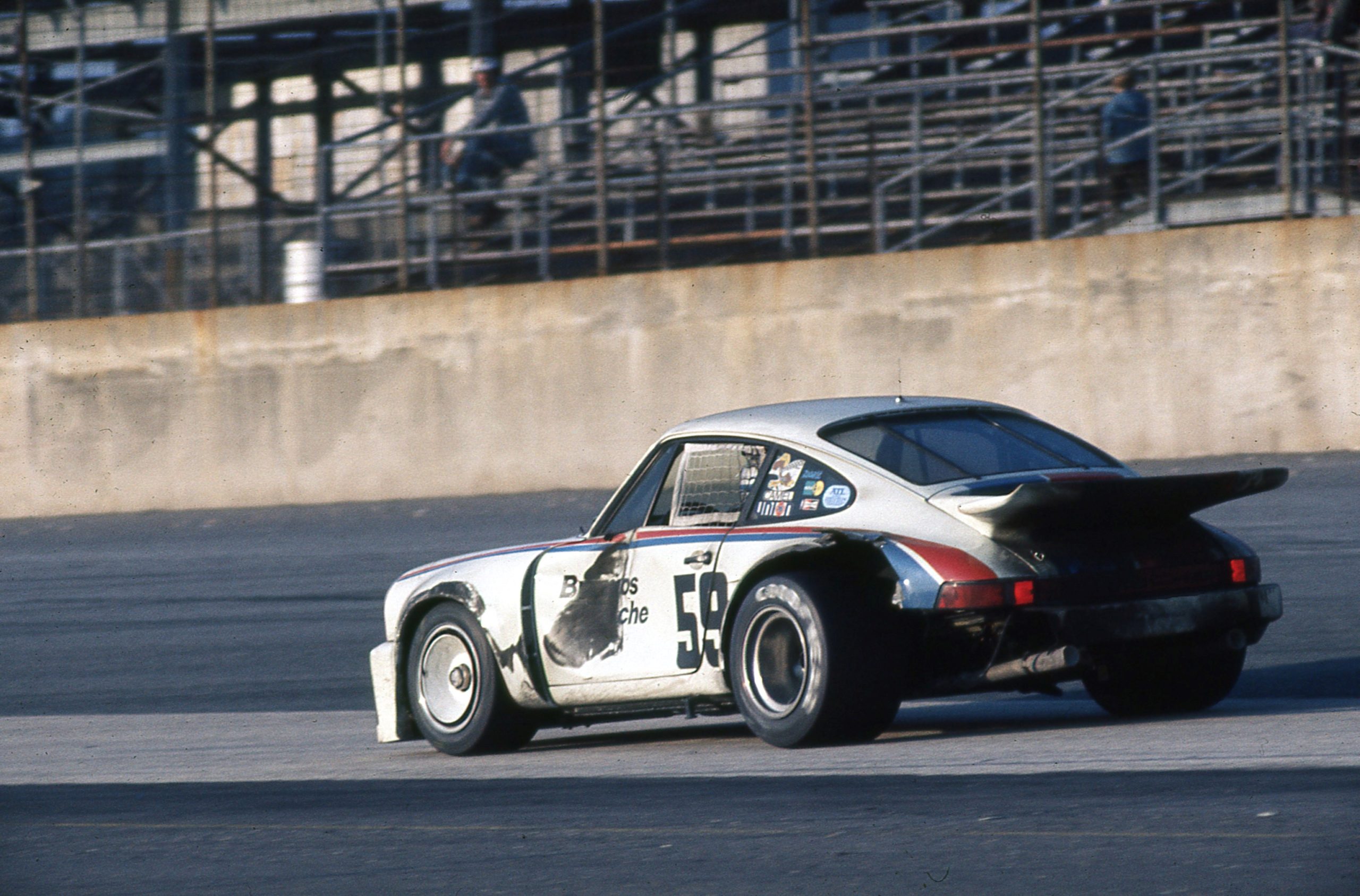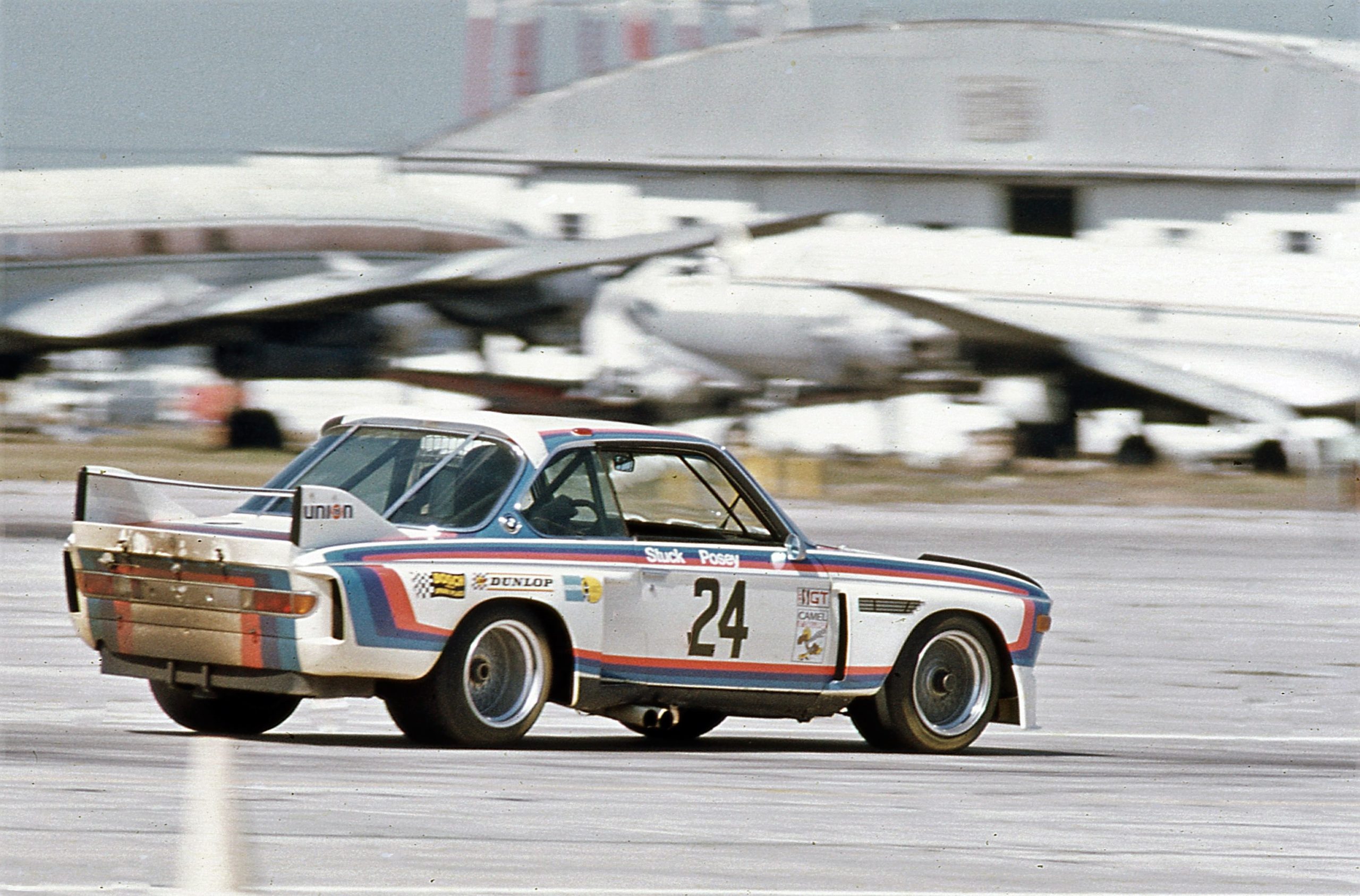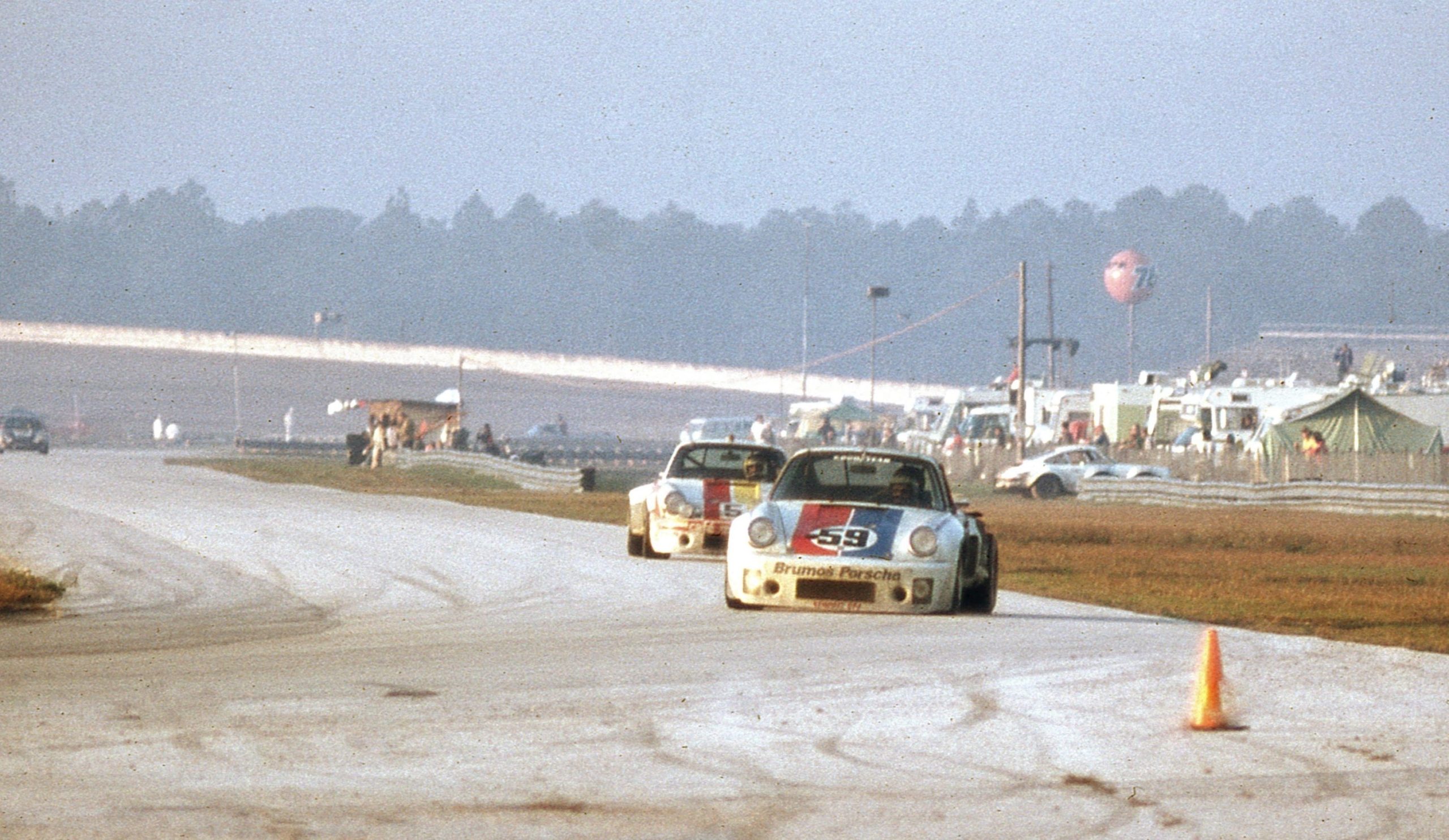The following contains excerpts from “IMSA 1969-1989” written by Mitch Bishop and Mark Raffauf, and published by Octane Press, which tells the inside story of how IMSA got started and its first 20 glorious years. Available from Octane Press or wherever books are sold.
_____________________________________________________________________________________________
When IMSA started sanctioning GT races in 1971, the big prizes on the horizon for the organization were always the 12 Hours of Sebring and the 24 Hours of Daytona. Both events had achieved international fame by then, attracting the best and brightest drivers from Formula One, world endurance racing, USAC, and the SCCA. But for different reasons, both events were in trouble by 1973. The FIA had dictated track and safety improvements at Sebring, which led the Ulmann family to announce that the 1972 race would be the last. IMSA picked up the pieces in 1973 thanks to the backing of John Greenwood, the organizational efforts of Reggie Smith and the work of IMSA founder and president, John Bishop.
In the meantime, ever-changing FIA technical rules for world endurance racing were limiting interest and even the length of the Daytona event, which ran as a six-hour event in 1972 due to concerns that the fast prototypes from Ferrari and Alfa Romeo wouldn’t last a full 24 hours. Other manufacturers like Porsche had long decided to pull out of the event.
Once IMSA joined ACCUS in 1973, it successfully lobbied to take over organizing the 24 Hours of Daytona starting in 1974. Unfortunately, in October that year, Saudi Arabia- controlled OPEC organized an oil embargo in retaliation for United States support of Israel during the Yom Kippur war. Over the next few months, the price of oil spiked globally and long lines formed at the pumps as shortages spread. Things got so bad that a rationing system based on the last digit of license plate numbers dictated which days people could purchase gasoline.
The shortage quickly put pressure on motorsports, which some saw as the wasteful use of a now precious commodity. Recently promoted NASCAR President Bill France Jr. organized an effective lobbying campaign in Washington D.C. to keep Congress from legislating NASCAR and other sanctioning bodies out of business. He pointed out the reality that it took less energy to put on a race than to fly an NFL football team coast-to-coast. The strategy worked, but concessions had to be made during the embargo, which lasted until April of 1974. Some races were shortened such as the Daytona 500, which ran only 450 miles.
IMSA’s two major endurance races were canceled outright in 1974. Even though IMSA had become a full member of ACCUS and had won the right to sanction the 24 Hours of Daytona in 1974, the race was shut down due to the shortage; Daytona’s owners could not guarantee a supply of fuel to support the thousands of fans expected to attend the event. Sebring was canceled for similar reasons, making the Road Atlanta round the opening race of the 1974 Camel GT season. The event was stretched to 6 hours in homage to Daytona and Sebring and was won by Al Holbert and Elliott Forbes-Robinson in a 3.0 liter Porsche Carrera RSR.
George Dyer’s Porsche Carrera RSR at Daytona in 1975 at sunrise on Sunday. Yes, there used to be trees visible in the infield section of the road course. Photo: MarkRaffauf
Thus, the 24 Hours of Daytona became the opening round of the Camel GT Series in 1975 and marked the first time that IMSA sanctioned the event. A healthy field of 51 over- and under-2.5 liter GT cars started the race on Saturday, February, 1st. There were no prototypes running in IMSA at that time. Although the first All-American GT cars were beginning to be built, none showed for the twice-around-the-clock endurance event. Horst Kwech would debut the first production AAGT DeKon Monza later that year at Road Atlanta.
The winning Brumos Porsche Carrera RSR enters Turn One during the 24 Hours of Daytona in January 1975. Note the crash damage caused by an incident earlier in the race with Hector Rebaque that required a lengthy pit stop to repair. Photo: MarkRaffauf
Twenty-one of the entries were Porsches. By then, Porsche had been building a very successful customer car program under the direction of Jo Hoppen, the head of Porsche Motorsports USA. Hoppen aggressively drove a customer car program that became the de facto model for other manufacturers in the sport. When the International Race of Champions switched from Porsche to Camaros for the 1974 season, 15 Carrera RSRs instantly became available for IMSA racing. They had rolled off the production line at a German factory ready to race; anyone with the right-sized checkbook could buy one. The cars were sorted, reliable and fast. Hoppen placed the cars with good teams, which filled up IMSA fields for the next few years with strong entries carrying the Porsche banner. He also arranged for a fully stocked Porsche parts trailer to show up at every IMSA event, ensuring that all the teams were well supported.
John Greenwood’s Corvette was one of the Porsche antagonists. Seen here under braking for Turn One during the 1975 24 Hours of Daytona, it featured a paint scheme promoting the 12 Hours of Sebring a few weeks later. Greenwood’s big-block Corvettes with wild bodywork were fast (he won the pole for the race) but didn’t last the distance, completing just 148 laps. Photo: MarkRaffauf
In other news, one of the newcomers to IMSA at Daytona in 1975 was the first factory “super team” from Europe. Jochen Neerpasch brought the latest factory BMW CSL team to the premier IMSA series with pilots Brian Redman, Hans Stuck, Ronnie Peterson, Dieter Quester, and Sam Posey. As the U.S. market recovered from the gas crisis, BMW wanted to use racing to underscore its core marketing message: “The Ultimate Driving Machine.” The addition of BMW and top European drivers to the series also had the effect of raising the competition level significantly. A proven entity in Europe, the CSL had struggled in the U.S. in 1974 without proper factory backing.
Unfortunately, neither car finished the 1975 24 hour race, with the Redman, Petersen car dropping out after just 29 laps and the Stuck, Posey car ending up in 33rd spot. After the disappointing results against an army of Porsche Carreras, the BMW team regrouped and moved its U.S. operations deep into NASCAR country: the shops of Bobby and Donnie Allison in Hueytown Alabama. The team spent a month modifying the standard European-version of the CSL into a potent IMSA contender by removing weight, stiffening the chassis, improving engine reliability and tweaking aerodynamics. The changes worked; BMW won the 12 Hours of Sebring in March and became a contender throughout the rest of the 1975 season.
The winning factory BMW CSL of Hans Stuck, Sam Posey, Brian Redman, and Allan Moffat navigates the wide-open runways of Sebring in 1975 when Lockheed Constellations and Douglas DC-4s lined the course unprotected between Turns One and Two. Photo: Mark Raffauf
Against this backdrop, the 1975 Daytona 24 Hours was an all-Porsche affair. The only drama was: which Porsche would win. Peter Gregg tangled early on with the RSR that had won the Mexican round of the FIA’s World Championship of Makes the previous year. The No. 5 Café Mexico Porsche was driven at Daytona by Hector Rebaque, Fred van Beuren, and Guillermo Rojas. After the incident, both cars spent many laps in the pits to repair damage and fell back in the standings.
Peter Gregg leads the similar machine of Rebaque/Rojas/van Beuren during the 24 Hours of Daytona in 1975 on Sunday morning. The two cars came together early in the race, requiring extensive repairs to both. Hurley Haywood and “Peter Perfect” came back to win with a car that was not so perfect. Photo: MarkRaffauf
Throughout the evening the Brumos car gained ground back with Gregg and Hurley Haywood alternating behind the wheel. A thick fog rolled in as the night progressed and visibility became a real issue. Haywood got into the car just past midnight for what was expected to be a three-hour stint since Gregg was never a big fan of driving at night or in lousy weather. Haywood, who had extraordinary vision, always seemed to get the nod in those conditions.
Despite the fog, Hurley kept circulating at close to qualifying speeds through the night. He drove longer than expected and probably longer than technically allowed. In the process, he dragged the battered No. 59 back onto the lead lap and eventually into the lead, the entire time his car barely visible to race control.
When asked his status by IMSA officials over the radio, he continued to report, “I can see everything fine down here on the ground,” which may or may not have been entirely true. Haywood drove an epic six hours straight, taking the lead and ultimately winning the race for the Brumos team. It would be one of five victories for each of the hall of fame drivers at the storied 24-hour event. In the end, Porsches occupied 13 of the top 15 spots in the results.






